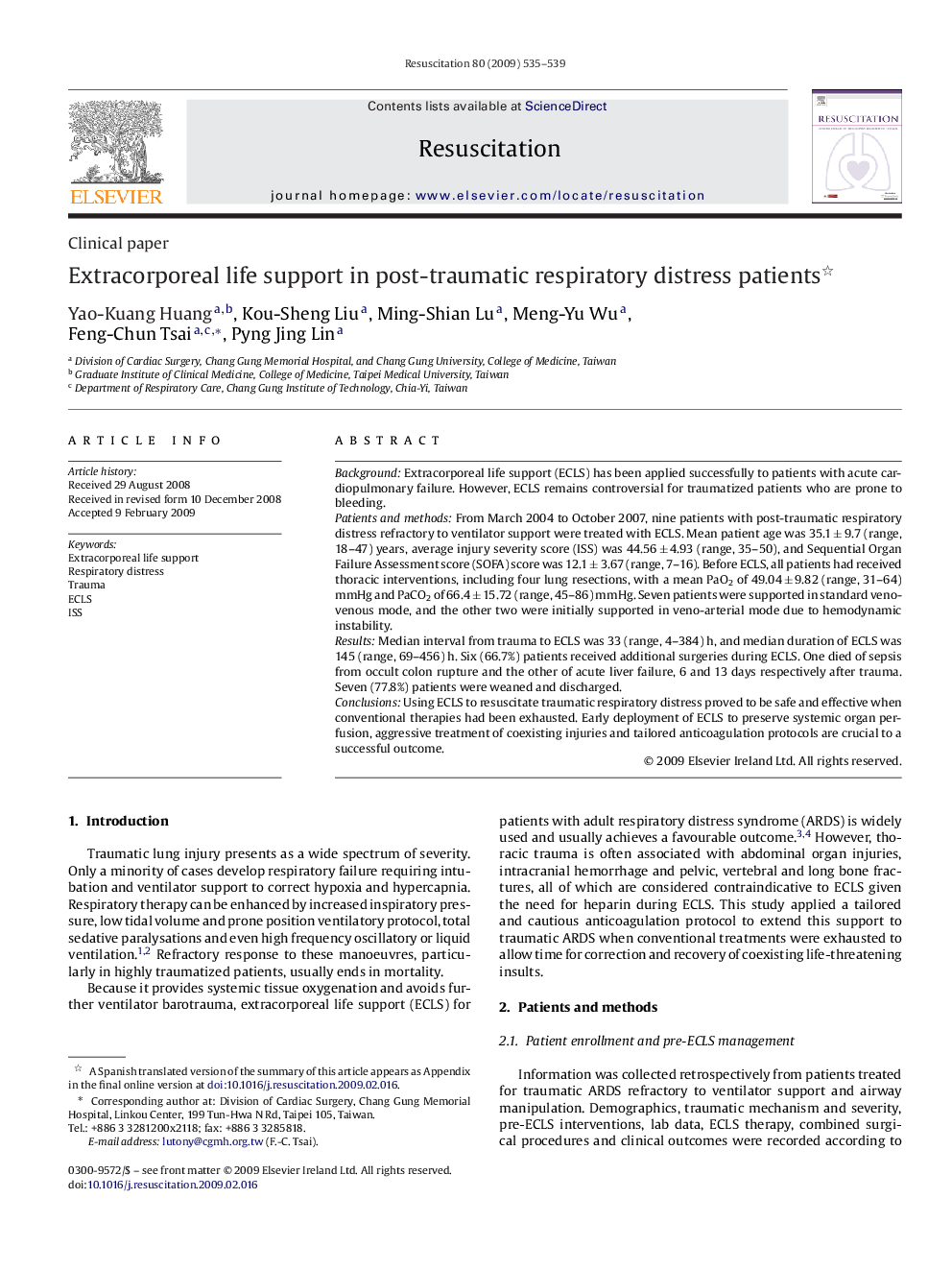| Article ID | Journal | Published Year | Pages | File Type |
|---|---|---|---|---|
| 3011181 | Resuscitation | 2009 | 5 Pages |
BackgroundExtracorporeal life support (ECLS) has been applied successfully to patients with acute cardiopulmonary failure. However, ECLS remains controversial for traumatized patients who are prone to bleeding.Patients and methodsFrom March 2004 to October 2007, nine patients with post-traumatic respiratory distress refractory to ventilator support were treated with ECLS. Mean patient age was 35.1 ± 9.7 (range, 18–47) years, average injury severity score (ISS) was 44.56 ± 4.93 (range, 35–50), and Sequential Organ Failure Assessment score (SOFA) score was 12.1 ± 3.67 (range, 7–16). Before ECLS, all patients had received thoracic interventions, including four lung resections, with a mean PaO2 of 49.04 ± 9.82 (range, 31–64) mmHg and PaCO2 of 66.4 ± 15.72 (range, 45–86) mmHg. Seven patients were supported in standard veno-venous mode, and the other two were initially supported in veno-arterial mode due to hemodynamic instability.ResultsMedian interval from trauma to ECLS was 33 (range, 4–384) h, and median duration of ECLS was 145 (range, 69–456) h. Six (66.7%) patients received additional surgeries during ECLS. One died of sepsis from occult colon rupture and the other of acute liver failure, 6 and 13 days respectively after trauma. Seven (77.8%) patients were weaned and discharged.ConclusionsUsing ECLS to resuscitate traumatic respiratory distress proved to be safe and effective when conventional therapies had been exhausted. Early deployment of ECLS to preserve systemic organ perfusion, aggressive treatment of coexisting injuries and tailored anticoagulation protocols are crucial to a successful outcome.
